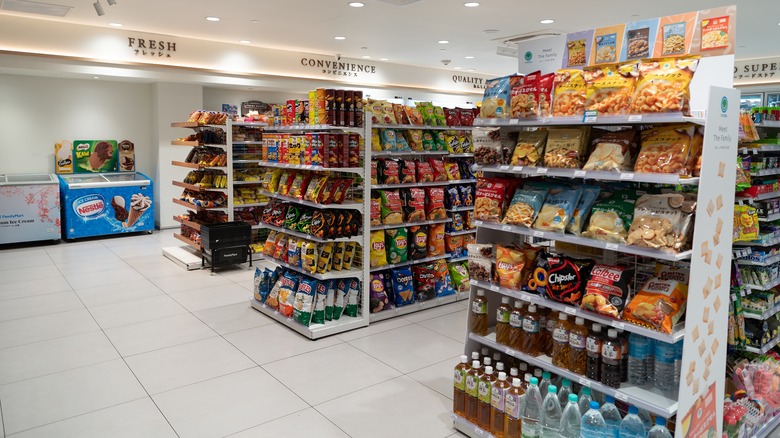What Was The First US Convenience Store Chain?
Today, the bright lights of convenience stores seem to be on every corner. Yet, just a century ago, finding hunger-satisfying snacks and pantry staples around the clock was impossible. This cultural shift, which modern American consumers now take for granted, was started by 7-Eleven.
The first U.S. convenience store chain began in the Oak Cliff neighborhood of Dallas, Texas, in 1927. Originally called the Southland Ice Company, the chain emerged as a union of icehouse companies. Before Slurpees, seasonal pumpkin spice lattes, and egg salad sandwiches, the sale of pantry staples like milk and eggs — backed by 16 hours of operation daily — proved innovative enough. An increasing number of outlets began operating from 7 a.m. to 11 p.m., leading to the 7-Eleven renaming in 1946.
By the 1950s, locations expanded nationwide, with states like Florida and Pennsylvania among the first to adopt the convenience model. A decade later, in 1963, a rowdy college football game caused a 7-Eleven store owner to push closing hours, unintentionally opening the first 24-hour location. The convenience store's growth never slowed. As of October 2025, 7-Eleven operates over 9,000 locations in the U.S. alone, making it still the country's largest chain, per ScrapeHero — a remarkable trajectory that cements the brand's pioneering legacy.
7-Eleven continued innovating into the 21st century
7-Eleven continued its brisk pace of innovation, debuting the iconic Slurpee in 1966. Innovatively merging an ice cream maker with a soda machine, the beverage instantly became popular, attracting a new roster of regulars. Ten years later, the chain once again boosted sales with the release of the Big Gulp, further attracting consumers with a 32-ounce soda size (outshining the previous 20-ounce capacity).
In the 1970s, 7-Eleven also began expanding abroad; an initial Tokyo location opened in 1974. The concept proved successful, eventually leading to the distinctly Japanese convenience store food culture. Following a bankruptcy in 1990, much of the company's stock transferred to Japanese companies in 1991. Then, in 2005, 7-Eleven became fully acquired by Japanese parent company Seven & i Holdings Co., Ltd. Today, more outlets operate in Japan than in North America. In fact, as of 2025, the company is aiming to transform U.S. stores into a more Japanese style by expanding both ready-to-eat and made-to-order options.
Accordingly, the chain's growing conglomeration of fast-food ventures defines its 21st-century American expansion. 7-Eleven took over all Laredo Taco Company locations in 2024. And in 2020, the retailer debuted Raise the Roost Chicken & Biscuits, establishing itself among biscuit and fried chicken chains. As locations keep expanding, 7-Eleven is striving to win over customers with the same core premise: an around-the-clock, one-stop shop for your day-to-day needs — now with better dining options, too.


